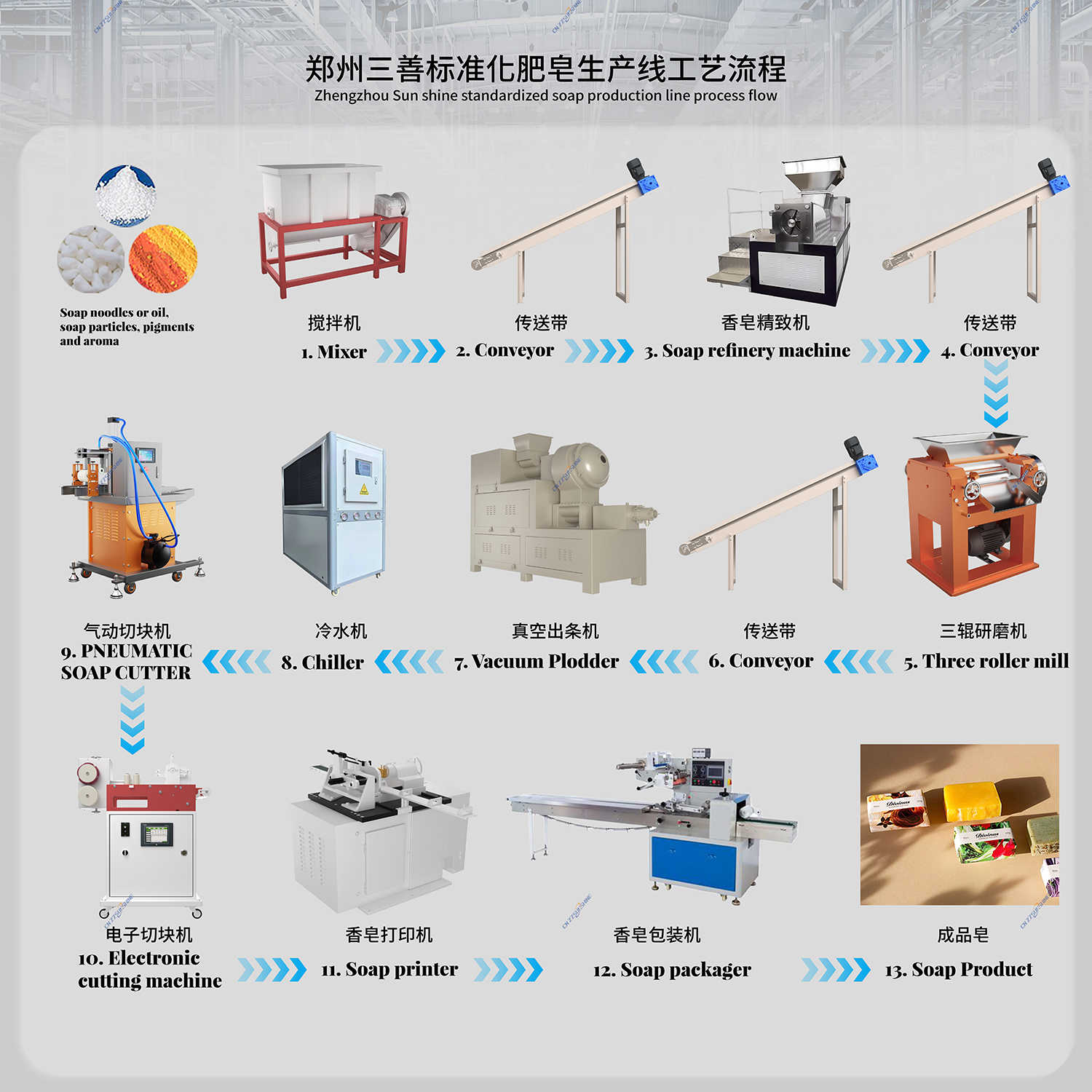In modern industrial soap production, a well-integrated soap making production line is the backbone of efficient, high-quality bar soap manufacturing. This automated system streamlines every stage, from raw material blending to final cutting, ensuring consistency and reducing manual errors. Key components like the vacuum plodder play a pivotal role by removing air bubbles and creating a dense, uniform texture, while the soap mixer ensures thorough homogenization of ingredients. For specialized applications, such as a laundry bar soap production line or beauty soap making line, customization options like a custom soap cutting machine allow for tailored shapes and sizes to meet diverse market needs.
The advantages of an automatic soap production line are substantial. By incorporating an electric washing soap cutter, manufacturers achieve precise, clean cuts without residue, enhancing product aesthetics and reducing waste. Similarly, a vacuum plodder minimizes defects and improves soap durability, which is critical for high-volume outputs. This automation not only boosts throughput by up to 50% but also lowers operational costs through energy-efficient designs and minimal downtime. For instance, in a toilet soap finishing line, integrated systems ensure hygiene compliance and faster turnaround times.
Moreover, selecting the right equipment, such as a reliable soap plodder machine or mixing machine, ensures seamless integration across the production chain. This holistic approach supports scalability, allowing businesses to adapt to demands like eco-friendly formulations or custom packaging. Ultimately, investing in a robust soap making production line drives competitiveness by delivering superior, cost-effective bar soaps that meet stringent quality standards, positioning manufacturers for long-term success in a dynamic industry.




